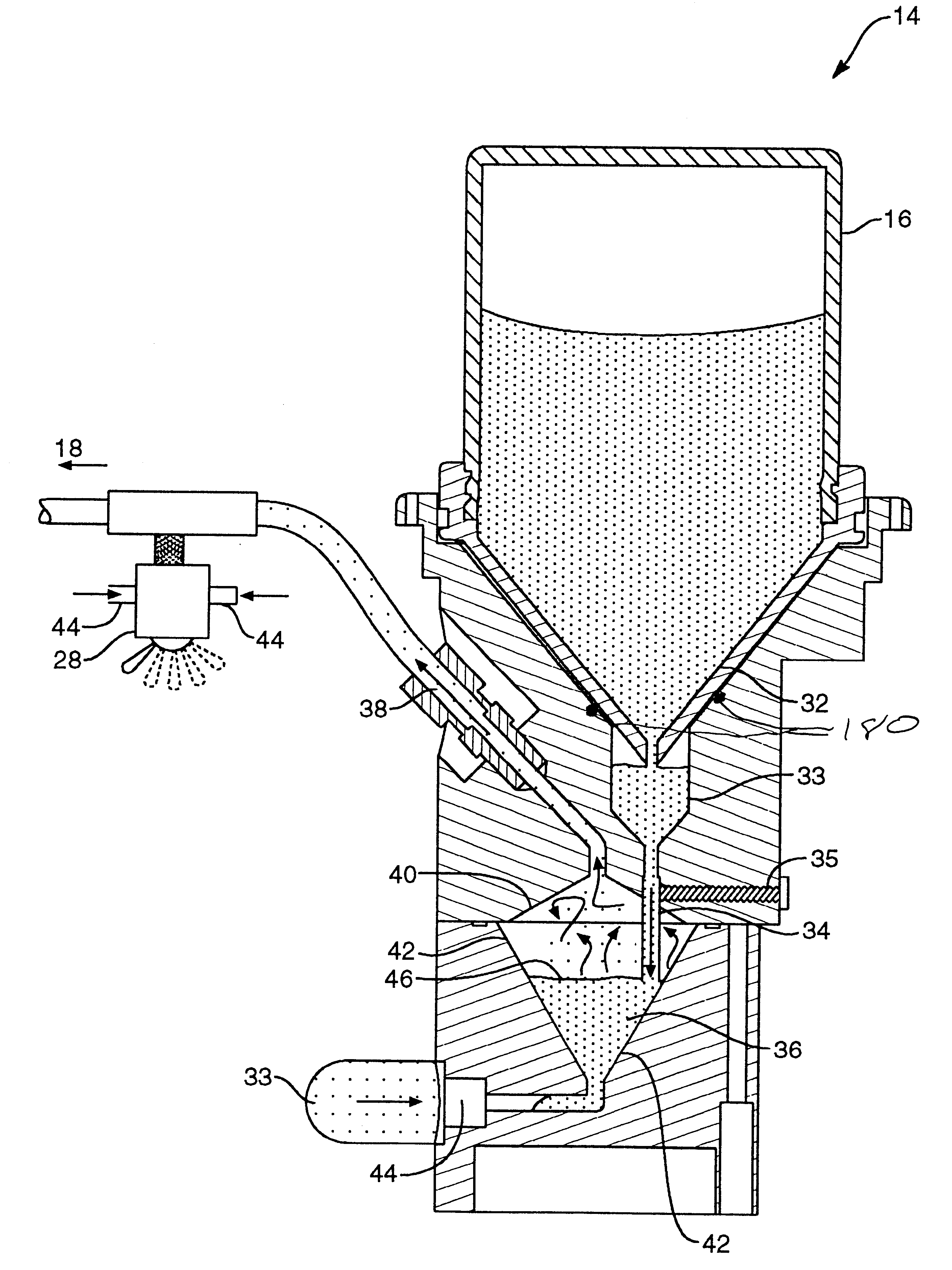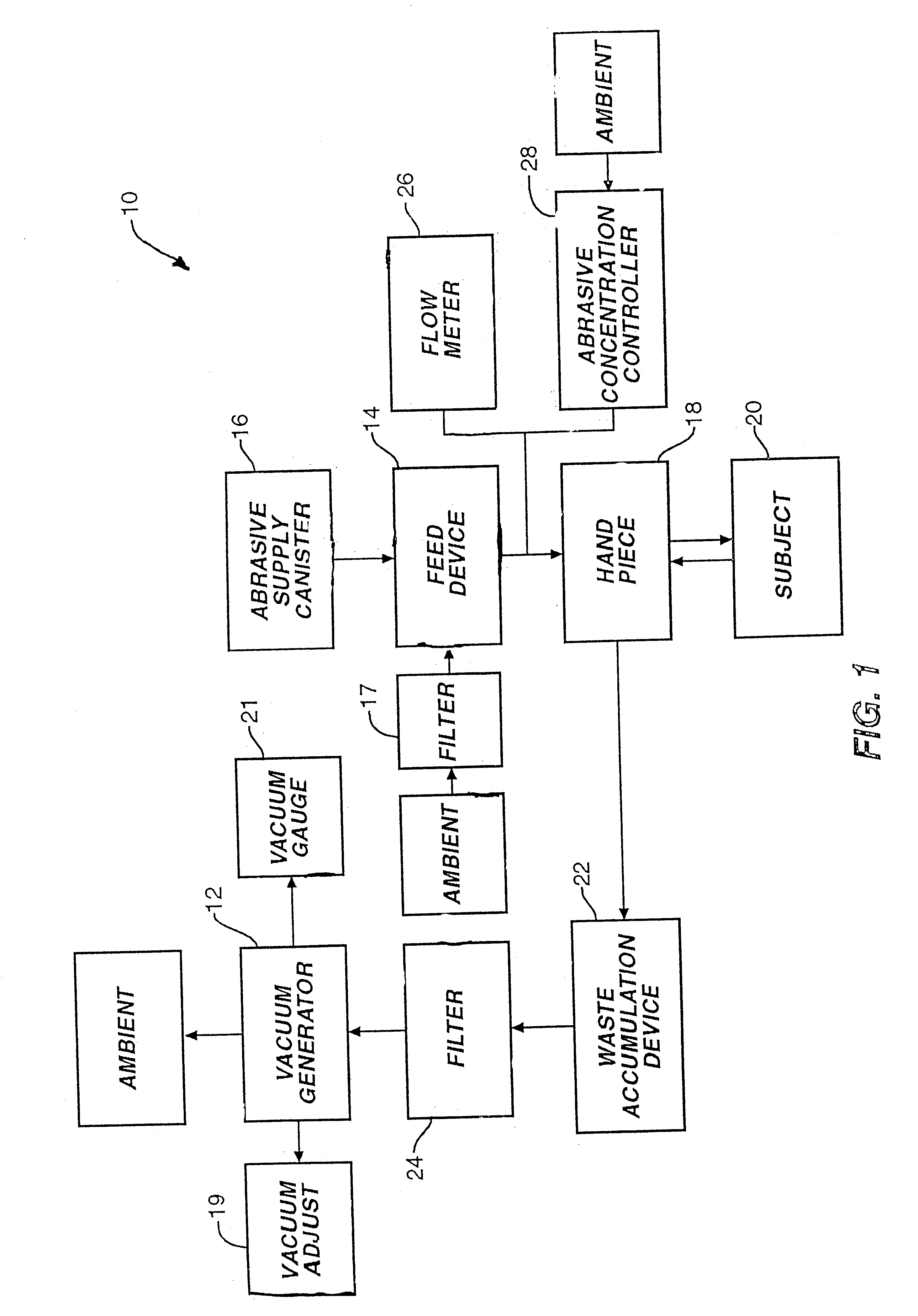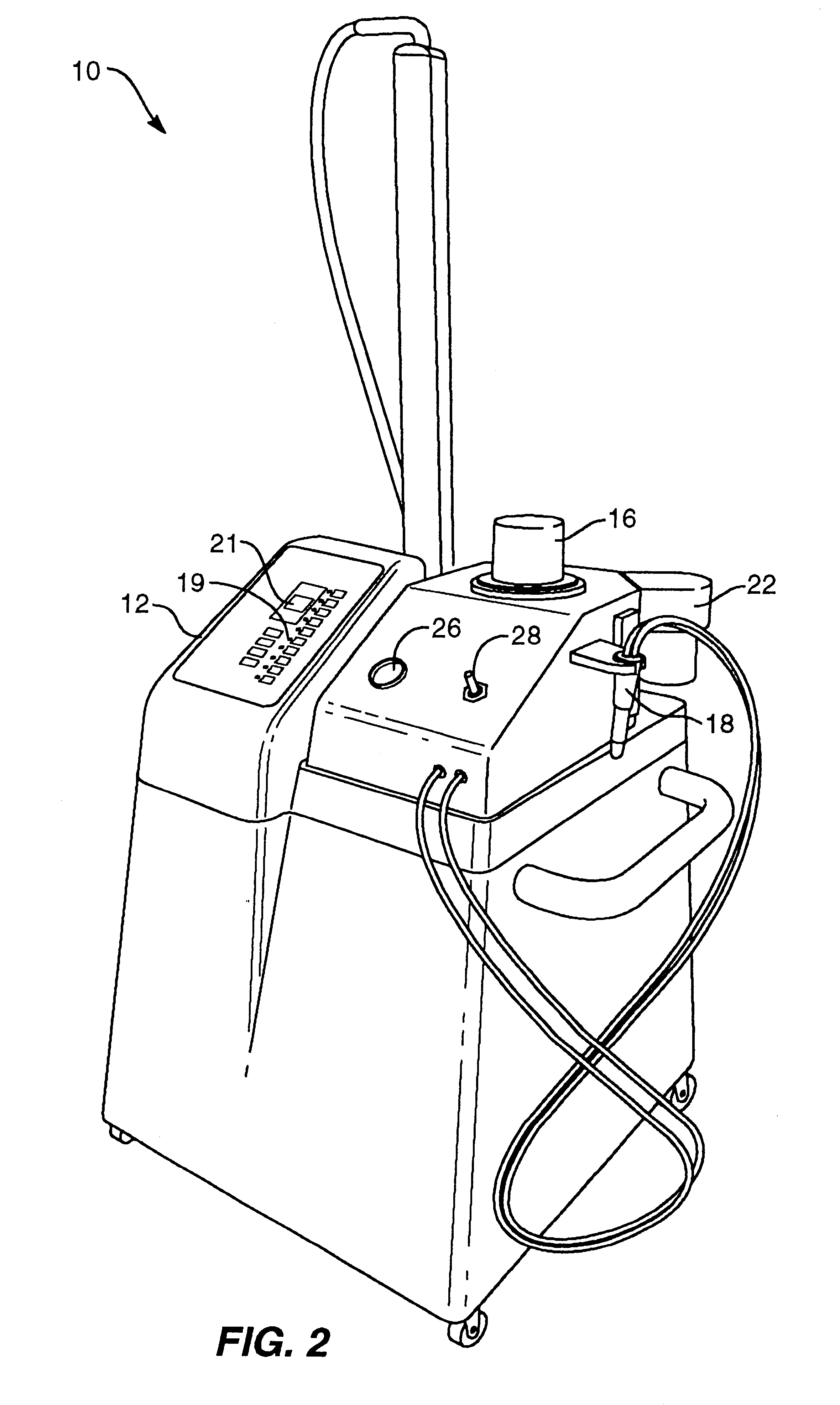Method and system for performing microabrasion
a micro-abrasion and micro-abrasion technology, applied in the field of micro-abrasion systems and methods, can solve the problems of waste and unnecessary exposure to abrasive materials, preventing optimal and efficient operation on a subject or patient, and handling abrasive materials at the supply poin
- Summary
- Abstract
- Description
- Claims
- Application Information
AI Technical Summary
Benefits of technology
Problems solved by technology
Method used
Image
Examples
Embodiment Construction
It will be readily understood that the components of the present invention, as generally described and illustrated in the figures herein, could be arranged and designed in a wide variety of different configurations. Thus, the following more detailed description of the embodiments of the system and method of the present invention, and represented in FIGS. 1 through 6, is not intended to limit the scope of the invention, as claimed, but is merely representative of the presently preferred embodiments of the invention.
The presently preferred embodiments of the invention will be best understood by reference to the drawings, wherein like parts are designated by like numerals throughout.
An abrasion system 10, which is optionally portable, is depicted in the block diagram of FIG. 1 as well as in FIG. 2. Dermabrasion apparatus 10 is a pneumatically driven apparatus that includes a vacuum generator 12. The pneumatic source may also be provided by a forced air system well known to those skille...
PUM
 Login to View More
Login to View More Abstract
Description
Claims
Application Information
 Login to View More
Login to View More - R&D
- Intellectual Property
- Life Sciences
- Materials
- Tech Scout
- Unparalleled Data Quality
- Higher Quality Content
- 60% Fewer Hallucinations
Browse by: Latest US Patents, China's latest patents, Technical Efficacy Thesaurus, Application Domain, Technology Topic, Popular Technical Reports.
© 2025 PatSnap. All rights reserved.Legal|Privacy policy|Modern Slavery Act Transparency Statement|Sitemap|About US| Contact US: help@patsnap.com



